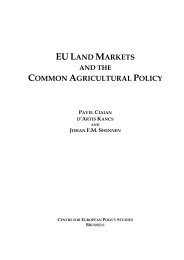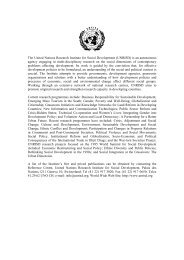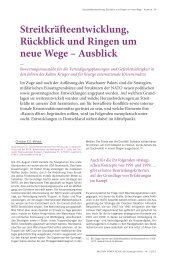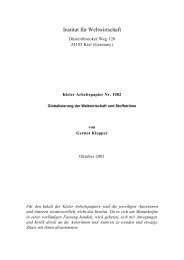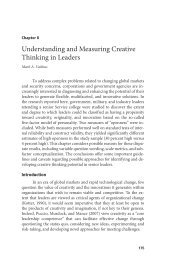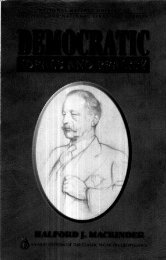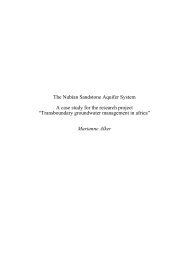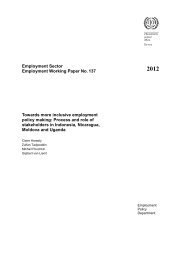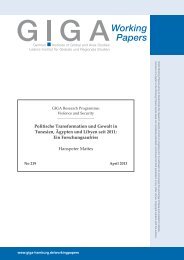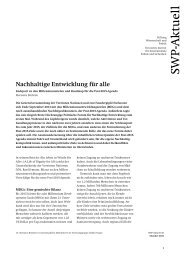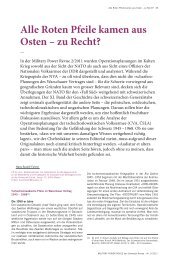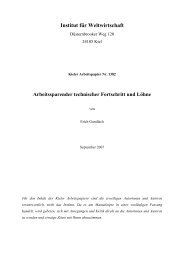A Postcolonial-Feminist Alternative to Neoliberal Self/Other Relations
A Postcolonial-Feminist Alternative to Neoliberal Self/Other Relations
A Postcolonial-Feminist Alternative to Neoliberal Self/Other Relations
Create successful ePaper yourself
Turn your PDF publications into a flip-book with our unique Google optimized e-Paper software.
FROM ‘BORDERS’ TO ‘BORDERLANDS’:<br />
A Multiple Worlds <strong>Alternative</strong><br />
<strong>Postcolonial</strong> theory seeks <strong>to</strong> transform such debilitating <strong>Self</strong>/<strong>Other</strong> relations. Not<br />
limited <strong>to</strong> one approach, perspective, or method, postcolonial theory nevertheless stems<br />
from a common normative commitment: i. e., <strong>to</strong> recognize and document the ability of<br />
the subaltern (whether slave, prostitute, servant, clerk, or lieutenant) <strong>to</strong> ‘remake’ the<br />
colonizer’s hegemony, often under conditions that W.E.B. Dubois (1903) coined a<br />
‘double consciousness’. In asking, ‘What did the subaltern think and do about colonial<br />
oppression, identity, and social relations?’ postcolonial theorists return <strong>to</strong> the <strong>Other</strong> not<br />
just voice and presence but also agency.<br />
Additionally, postcolonial feminists inject a much-needed sensibility <strong>to</strong> subaltern<br />
his<strong>to</strong>ry: i.e., the role and impact of patriarchy. Note for example, a pro<strong>to</strong>-postcolonial<br />
theorist like Edward Said. He masterfully illuminated the intricacies of culture and<br />
politics yet did not register any complicity between <strong>Self</strong> and <strong>Other</strong> in patriarchy due <strong>to</strong><br />
his presumption that social structures like imperialism are gender-neutral. He overlooked<br />
the possibility that women and other feminized subjects may not regard ‘exile’, for<br />
example, as so different from ‘home’, especially if they must contend with similar<br />
constraints of racism, sexism, and patriarchy in both (Ling 2007).<br />
An Indian clerk, for instance, may be a subaltern <strong>Other</strong> <strong>to</strong> the British sahib at<br />
work. But he becomes a patriarchal <strong>Self</strong> <strong>to</strong> his subalternized wife at home. Similarly, the<br />
British sahib, if Irish or homosexual or minority in any way, would be subalternized by<br />
his ‘superior’, say an English aris<strong>to</strong>crat, in the colonial hierarchy. The status of white<br />
women in the colonies exemplified this multi-layered, inter-mixed, and rotational nature<br />
between ‘colonizer’ and ‘colonized’ (Pratt 1992).<br />
Neither does the hypermasculine white-male <strong>Self</strong> escape from such complexities<br />
and multiplicities. Rey Chow (2003: 342-343) explains:<br />
What I am suggesting is a mode of understanding the native in which the native’s<br />
existence – that is, an existence before becoming ‘native’ – precedes the arrival of<br />
the colonizer. Contrary <strong>to</strong> the model of Western hegemony in which the colonizer<br />
13



